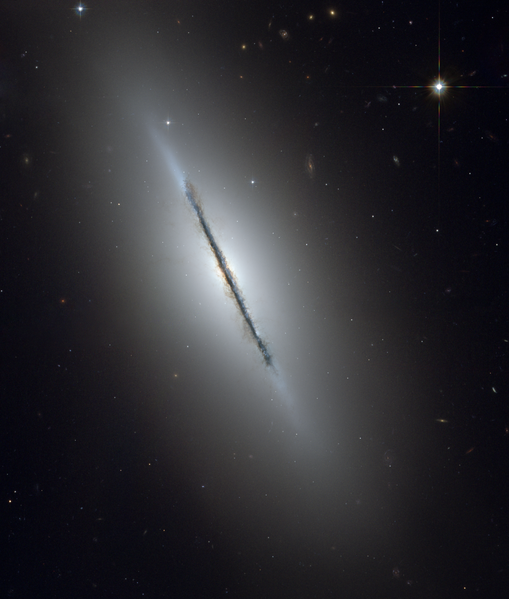Imådje:Ngc5866 hst big.png

Grandeur do préveyaedje: 509 × 599 picsels. Ôtès fintés: 204 × 240 picsels | 408 × 480 picsels | 652 × 768 picsels | 870 × 1 024 picsels | 1 739 × 2 048 picsels | 3 190 × 3 756 picsels.
Fitchî d’ oridjinne (3 190 × 3 756 picsels, groxheur do fitchî: 25,78 Mo, del sôre "MIME": image/png)
Istwere do fitchî
Clitchîz so ene date ey ene eure po vey kimint ki l’ fitchî esteut adon.
| Date/Eure | Imådjete | Grandeur | Uzeu | Comintaire | |
|---|---|---|---|---|---|
| asteure | 16 fevrî 2009 à 18:38 |  | 3 190 × 3 756 (25,78 Mo) | Spencer | {{Information |Description={{en|1=From original NASA press release: :This is a unique view of the disk galaxy en:NGC 5866 tilted nearly edge-on to our line-of-sight. Hubble's sharp vision reveals a crisp dust lane dividing |
Eployaedjes do fitchî
Li pådje shuvante eploye ci fitchî ci :
Eployaedje tot avå do fitchî
Les ôtes shuvants wikis eployèt c’ fitchî ci :
- Eployaedje so ab.wikipedia.org
- Eployaedje so ace.wikipedia.org
- Eployaedje so af.wikipedia.org
- Eployaedje so af.wikibooks.org
- Eployaedje so af.wikiquote.org
- Eployaedje so af.wiktionary.org
- Eployaedje so ak.wikipedia.org
- Eployaedje so als.wikipedia.org
- Eployaedje so am.wikipedia.org
- Eployaedje so am.wiktionary.org
- Eployaedje so ang.wikipedia.org
- Eployaedje so ang.wiktionary.org
- Eployaedje so an.wikipedia.org
- Eployaedje so an.wiktionary.org
- Eployaedje so arc.wikipedia.org
- Eployaedje so ar.wikipedia.org
- Eployaedje so ar.wikibooks.org
- Eployaedje so ar.wikinews.org
- Eployaedje so ar.wikiquote.org
- Eployaedje so ar.wikisource.org
- Eployaedje so ar.wikiversity.org
- Eployaedje so ar.wiktionary.org
- Eployaedje so arz.wikipedia.org
- Eployaedje so ast.wikipedia.org
- Eployaedje so ast.wiktionary.org
- Eployaedje so as.wikipedia.org
- Eployaedje so av.wikipedia.org
- Eployaedje so ay.wikipedia.org
- Eployaedje so ay.wiktionary.org
- Eployaedje so az.wikipedia.org
- Eployaedje so az.wikibooks.org
- Eployaedje so az.wikiquote.org
- Eployaedje so az.wikisource.org
- Eployaedje so az.wiktionary.org
- Eployaedje so bat-smg.wikipedia.org
- Eployaedje so ba.wikipedia.org
- Eployaedje so bcl.wikipedia.org
- Eployaedje so be-tarask.wikipedia.org
- Eployaedje so beta.wikiversity.org
- Eployaedje so be.wikipedia.org
- Eployaedje so be.wikibooks.org
Loukîz di pus so l’ eployaedje totavå di ci fitchî ci.


